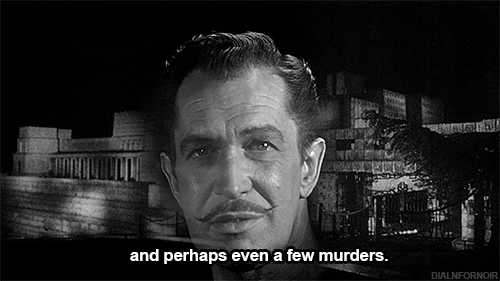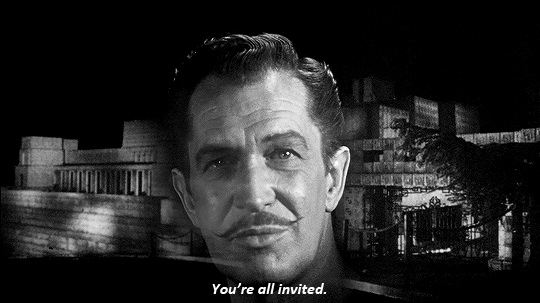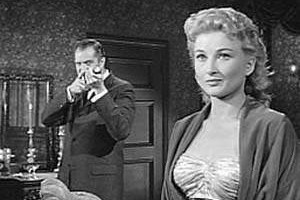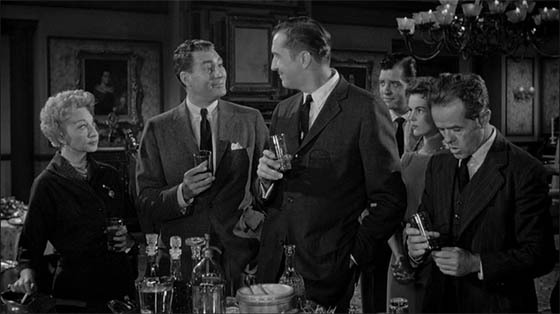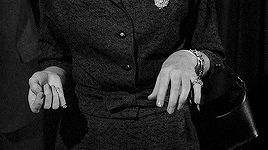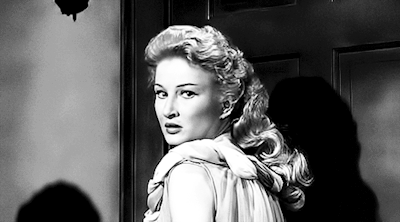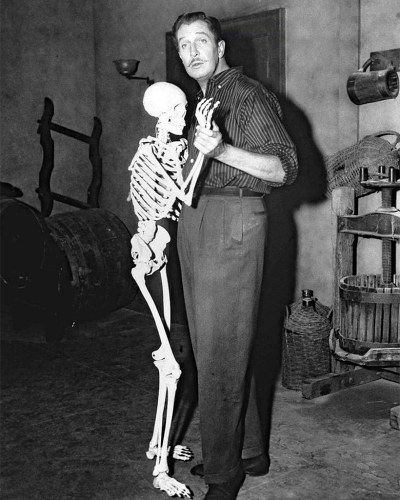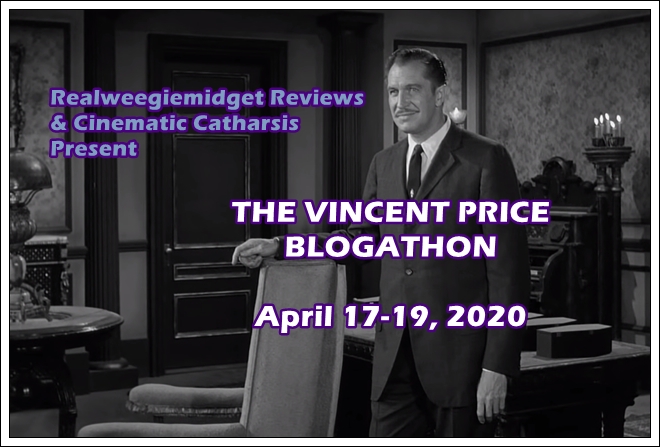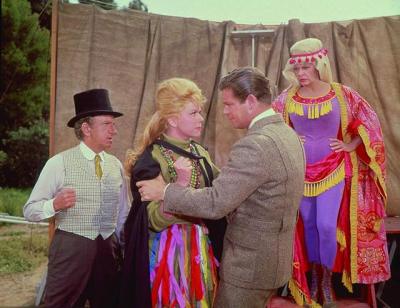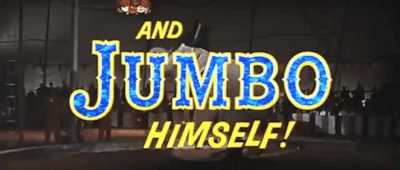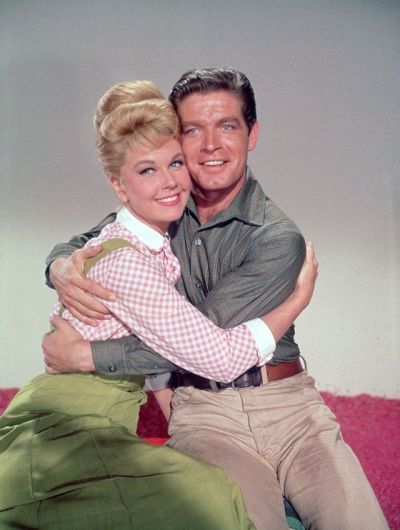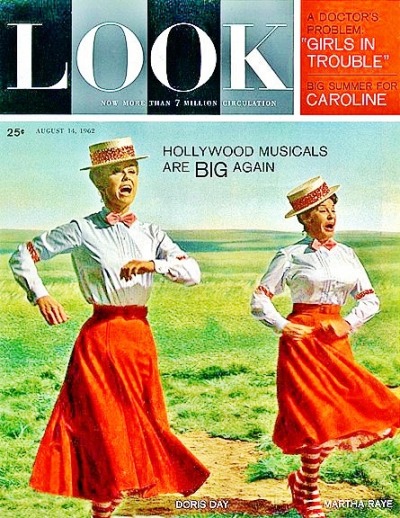É hora da festa! Mas a festa é numa casa
assombrada. E Vincent Price te convidou mesmo sem te conhecer – ele apenas quer
te ver sendo assustado. Bem, não é isso que queremos quando assistimos a filmes
de terror: ver outras pessoas levando sustos, além de ficarmos nós mesmos com
medo? Se você gosta de gritos – um monte de gritos – e de sustos, “A Casa dos
Maus Espíritos” é o filme ideal.
It’s party time! Except that the party is in a
haunted house. And Vincent Price has invited you without knowing you – he only
wants to see you get scared. Well, isn’t it what we want when we watch horror
movies: to see other people get scared and freak ourselves out? If you’re into
screams – a lot of screams – and jump scares, “House on Haunted Hill” is the
film for you.
Uma série de gritos e uma risada maligna são
ouvidos quando ainda não há imagens na tela. O público já sentiu um arrepio na
espinha. A primeira coisa que vemos é a cabeça flutuante de Elisha Cook Jr,
interpretando Watson Pritchard, cujo irmão foi morto durante uma estadia na
casa dos maus espíritos. Então somos recebidos pela cabeça flutuante de Vincent
Price, que nos conta que seu personagem alugou a casa para a esposa dar uma
festa. Há cinco convidados, chegando em carros funerários, e quem conseguir
ficar 12 horas na casa receberá 10 mil dólares.
A series of screams and an evil laugh are heard
while there are no images on the screen yet. The audience is already on the
edge of their seats. The first thing we see is the floating head of Elisha Cook
Jr, playing Watson Pritchard, whose brother was killed while staying at the
house on haunted hill. Then we're greeted by Vincent Price's floating head, who
tells that his character rented the house for his wife to give a party. There
are five guests, all arriving soon in funeral cars, and whoever is able to
spend 12 hours on the house gets 10,000 dollars.
Há algo curioso aqui: nenhum dos convidados conhece
pessoalmente os anfitriões – o personagem de Price, Frederick Loren, e sua
esposa Annabelle (Carol Ohmart). Eles foram convidados ou pelo telefone ou por
carta, e aceitaram o convite porque precisavam do dinheiro - a necessidade do
dinheiro, aliás, é a única coisa que eles têm em comum. Frederick só quer ter o
prazer de assisti-los tentando sobreviver para ganhar o prêmio. Esses ricaços
são tão excêntricos, não?
There is something curious here: none of the guests
personally know the hosts – Price's character, Frederick Loren, and his wife
Annabelle (Carol Ohmart). They were invited either by phone or by mail, and
accepted because they needed the money – their need for the money is, indeed,
the only thing they have in common. Frederick only wants the pleasure to watch
them trying to survive to win the prize. Those rich people are so eccentric, aren't they?
Annabelle, num primeiro momento, decide não
participar da festa - ela é uma mulher peculiar (Frederick pergunta para ela
“Você se lembra de como nos divertimos quando você me envenenou?”, por isso
podemos imaginar que eles foram feitos um para o outro, de um jeito estranho).
Mas, no caso deles, as aparências enganam. Na verdade, Annabelle é a quarta
esposa de Frederick. A primeira esposa desapareceu, e as outras duas morreram
em circunstâncias misteriosas. Ela não quer ser a próxima vítima.
Annabelle at first decides not to attend the party
– she is a very odd woman (Frederick asks her “You remember the fun we had when
you poisoned me?”, so we can imagine they are made for each other in a
disturbing way). But, in their case, the appearances are very deceiving. In
fact, Annabelle is Frederick's fourth wife. The first wife disappearedd, the
other two died in mysterious circumstances. She doesn't want to be the next
victim.
Sete pessoas já foram assassinadas na casa – quatro
homens e três mulheres. Curiosamente, os convidados são quatro homens e três
mulheres – um fantasma para cada, brinca Frederick. E não será só com fantasmas
que eles terão de lidar.
Seven people had already been murdered on the house
– four men and three women. Curiously, the guests are four men and three women
– a ghost for each, Frederick jokes. And
they won’t have to deal only with ghosts.
Nora Manning (Carolyn Craig) é nossa rainha do
grito – ela grita tanto que se torna chata. Infelizmente, ela é a personagem
que tem mais destaque, depois de Frederick. Como o filme é bem curto – tem
apenas 75 minutos - os personagens não têm chance igual de brilharem, e alguns
deles, como Ruth (Julie Mitchum, irmã de Robert Mitchum) e o piloto de avião,
são pouco desenvolvidos. A história do personagem de Elisha Cook Jr também
poderia ter sido explorada.
Nora Manning (Carolyn Craig) is our scream queen –
she screams so much that she becomes annoying. Unfortunately, she is the
character that gets the most screen time after Frederick. Because the film is
very short – only 75 minutes – the characters don't have an equal chance to
shine, and some of them, like Ruth (Julie Mitchum, Robert Mitchum’s sister) and
the jet pilot, are barely developed. Elisha Cook Jr’s character’s story could
also have been explored.
Obviamente,
a casa também é um personagem. Ela se parece com uma velha fortaleza, talvez um
prédio que podia abrigar um banco ou um prédio do governo – me lembrou do Forte
Knox. Mais tarde eu descobri que Ennis House, o local usado para tomadas do
exterior, foi construída com base na arquitetura Maia – foi o que certamente
alertou meu cérebro de historiadora. Ricamente decorada, a casa é trancada por
dentro, tendo barras nas janelas e uma porta que se fecha como a de um cofre.
Watson compara a impenetrabilidade da casa com um caixão. Há atrações em todos
os cantos da casa: uma mancha seca no teto é a fonte de um sangue pingando, um
poço está cheio de ácido, um órgão toca sem pianista, há passagens secretas e
muito mais. Há definitivamente muita coisa a explorar – e a temer – nas 12
horas que os personagens devem passar na casa.
The house, of course, is itself a character. It
looks like an old fortress, maybe a building that could be a bank or a very
secure governmental office – it reminded me of Fort Knox. Only later I learned
that the Ennis House, used for exterior shots, was built based on Mayan
architecture – it certainly rang a bell inside my historian’s brain.
Beautifully furnished and decorated, the house is locked from the inside,
having bars in the windows and a door like the ones found in vaults. Watson
compares the impenetrability of the house to a coffin. There are attractions in
every corner of the house: a dry stain in the ceiling still drops blood, a pit
is full of acid, an organ plays without a pianist, hidden passages and more.
There is definitely a lot to explore – and a lot to be afraid of – in the 12
hours the characters are supposed to spend there.
A trilha sonora tem tudo que se espera de uma
trilha de filme de terror clássico: é horripilante, tem pequenos efeitos
sonoros como portas abrindo e rangendo, piano, pratos e um suspense crescente.
O compositor Von Dexter trabalhou em quatro filmes com o diretor William
Castle, e esta é uma de suas composições mais icônicas.
The soundtrack is everything you can expect from a
classic horror movie soundtrack: it’s eerie; it has little sound effects like
doors opening and squeaking, piano, plates and an ever-growing suspense.
Composer Von Dexter worked in four films with director William Castle, and this
is one of his most iconic compositions.
O diretor William Castle criou um truque chamado
“Emergo” para acompanhar a exibição do filme em alguns cinemas: durante uma
cena importante, um esqueleto de plástico deveria emergir na frente da tela e
flutuar. William Castle, rei dos truques, lucrou muito com suas ideias, e “A
Casa dos Maus Espíritos” foi um sucesso de bilheteria- e o esqueleto foi
inclusive creditado como “ele mesmo”. Este foi o primeiro de dois filmes que
Castle e Vincent Price fizeram juntos no mesmo ano.
The director William Castle created a gimmick
called “Emergo” to accompany the screening of the film in some theaters: during
a key scene, a plastic skeleton was supposed to emerge in front of the screen
and float around. William Castle, king of gimmicks, profited a lot with his
little tricks, and “House on Haunted Hill” was a box-office hit - and the
skeleton was even credited as “itself”. This was the first of two movies Castle
and Vincent Price did together in the same year.
Nos últimos dez minutos, “A Casa dos Maus
Espíritos” tem uma grande surpresa que o torna diferente de todos os filmes de
terror que você já viu – na verdade, a surpresa até lhe confere um toque de
filme noir. Filmada em apenas 13 dias, “A Casa dos Maus Espíritos” pode ter
alguns defeitos, mas também mostra que filmes de baixo orçamento podem ser
divertidos e assustadores – em especial se há algum truque envolvido.
In the last 10 minutes, “House on Haunted Hill” has
an extreme plot twist that makes it different from all horror movies you've
seen – in fact, the plot twist even makes it noirish. Filmed in only 13 days,
“House on Haunted Hill” may have its flaws, but it also shows how low-budget
films can be entertaining and frightening – especially if a gimmick is
involved.
This is my
contribution to the Vincent Price blogathon, hosted by Gill and Barry at
ReelWeegieMidget Reviews and Cinematic Catharsis.


